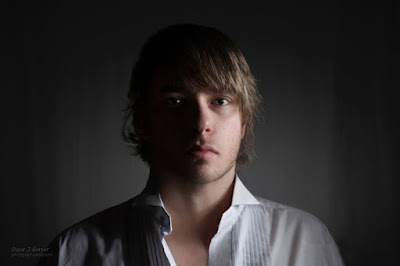Editors are part creatives and part technicians.
We need a comprehensive understanding of the industry standard editing softwares.
These include
Adobe Premiere Pro vs. Final Cut Pro, and
Da Vinci Resolve.
Narrative continuity:
Film editing is the art of connecting shots, scenes, and sequences to pull a movie’s story together. Shot length, camera angle emphasis, scene order and transitions, and sound design all impact viewer experience.
https://www.youtube.com/watch?v=33eWqDZ6sRc&pp=ygUWTmFycmF0aXZlIGNvbnRpbnVpdHk6IA%3D%3D
An editor could be selecting and cleaning up the best footage, placing it in the right order, and matching it with the right audio and soundtrack, editors also give a rhythm to a movie’s progression.
Tone:
Editing in film is also used as a visual language. The editor creates emotional meaning. Even seemingly small decisions in the editing room—such as using sharp, short cuts instead of leaving in long, unbroken shots—influences a scene’s tone. Some editing decisions can change the entire feeling of a film.
Mediation:
An editor can also be a mediator between the different departments of a film and contribute their own creative ideas throughout the filmmaking process.
Learn the intentions of different cuts and transitions:
Use the cuts intentionally in your editing.
- Use a smash cut to emphasis a shocking moment.
- Use L-cuts and J-cuts to make conversations flow naturally. Use insert shots to give the audience vital information without wordy exposition.
Match the editing to the film's tone:
The editing made for a film directed toward crafting its overall narrative.
For example, an action movie such as “John Wick” is edited to be fast and fluid, while a period drama such as “There Will Be Blood” is slow and weighty.
The editing gives appropriate tone of the film.
A great video editor can understand the components of a great performance. Often, he will be building scenes from multiple takes
Be original:
Be evocative:
Film editors must also be well versed in technical elements such as film segments, shots and camera movements, cuts, and continuity.
Momentary editing:
This is the basic shot placement, cuts, dialogue flow, action, and continuity within scenes.
Structural editing: Structural editing
This is the big picture of the film, which includes pacing, scene order, sequences, and plot movements.
Segments of a film:
Editing a film is the process of building up bits and pieces until you’re eventually left with a complete project. Here are the building blocks used by film editors:
- Shot: A continuous piece of footage between cuts.
- Scene: The basic storytelling unit of a film, scenes are compositions of shots and audio in a singular space and time.
- Sequence: A distinct narrative segment of a film that is made up of multiple related scenes—
- Act: One of the major blocks of a film that encompasses multiple sequences. Many films follow a three-act structure that includes common elements of storytelling, such as a climax in the third act followed by a resolution and falling action.
Shots and camera movements: Even though camera work isn’t the editor’s direct responsibility, they should know the basics. Learning about the art of cinematography—especially the different kinds of shots and camera movements—is essential for knowing how to make a balanced edit.
Cuts: In the video editing process, a cut refers to the shift from one clip to another. The term “cutting” came from the era when all movies were cut and spliced together on reels of physical film. Today, the majority of editing is done in digital programs such as Adobe Premiere Pro and Final Cut Pro. A few different kinds of cuts include
Standard/hard cut: A simple transition from one shot to another that’s most commonly used within scenes.
Smash cut: A sharp, snap change of one scene to another that emphasizes two contrasting elements. This cut is usually used to highlight a particular story beat, such as a punch line to a joke in a comedy or a way to release a tense moment in a horror or action movie.
Split edit: A deliberate mismatch of video and audio between scenes. Either the audio from the next scene begins before the video (a J-cut) or the video proceeds the audio (an L-cut)
Cutaway: This is when an editor embeds a shot from a different time and space into a scene as a way of introducing new information or story beats.
Montage: The French word for “assembly,” a montage is an arrangement of short clips into a continuous sequence. Montages are typically set to music or narration and convey a lot of narrative information in a brief segment of the film.
A cut can also mean one of the different versions of a film. Among the different kinds are:
The assembly cut: the editor’s first version of the project.
The rough cut: an unfinished version of the project that implements notes and tweaks from the director but still includes temp sound, music, and VFX, as well as scenes that will ultimately be trimmed or cut from
the Final cut: the version of the project that is locked with finished music and VFX
Continuity: One of an editor’s primary duties is maintaining continuity, or consistency of time and space within the film.
In the shot-to-shot sense, continuity means that the visual and audio elements line up. For example, if a character is standing in a corner and holding a prop in one shot, they should be in the same position in the next, unless an action has occurred. Audio, like dialogue or diegetic sounds (sounds that originate within the world of the film), should also flow between shots.
Plot continuity is arguably even more important than visual and audio continuity.
During the video editing process, a lot may be left on the cutting room floor. Shots, scenes, and entire characters might be trimmed out depending on what the director, producers, and studio decide. As a result, the film’s editor has to keep a sharp eye on the setup and payoff of plot points.

























